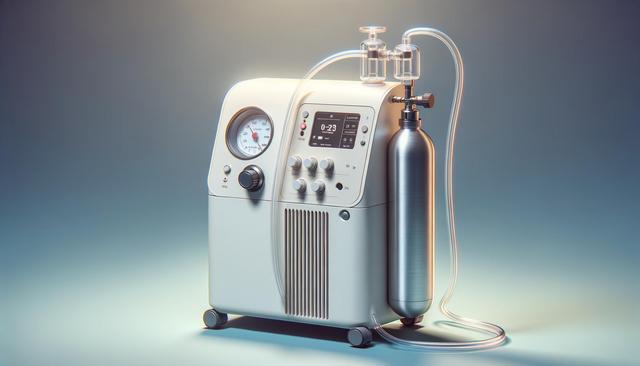Understanding How Oxygen Concentrators Work
Oxygen concentrators are devices designed to help individuals who experience difficulty in getting enough oxygen naturally through breathing. Unlike oxygen tanks that store a fixed amount of oxygen, concentrators draw in ambient air, filter it, and deliver oxygen-rich air to the user. The process involves multiple filters and a compressor that separates nitrogen from oxygen, concentrating the oxygen for medical use. This method makes oxygen concentrators a more sustainable and often more convenient solution for long-term oxygen therapy.
These devices are widely used in managing conditions such as chronic obstructive pulmonary disease (COPD), pulmonary fibrosis, and other lung-related illnesses. According to health professionals, oxygen concentrators can significantly improve a patient’s quality of life by ensuring a steady supply of oxygen at home or on the go. With advancements in design, many units are now compact and lightweight, catering to active lifestyles and travel needs.
Is This the Future of Home Breathing Support?
The growing popularity of home-based oxygen therapy suggests that oxygen concentrators are indeed shaping the future of respiratory care. With more users seeking independence and mobility, the demand for efficient, user-friendly devices is on the rise. Modern oxygen concentrators come equipped with features that make them easier to use and maintain, including:
- Digital displays with real-time oxygen flow data
- Adjustable flow settings
- Quiet operation for use during sleep
- Battery-powered options for portability
These innovations highlight the shift toward personalized and convenient care. Rather than relying on refills or scheduled deliveries, users can operate concentrators as needed, offering both freedom and peace of mind. This shift is particularly beneficial for elderly individuals and those managing long-term respiratory conditions at home.
Choosing the Right Type of Oxygen Concentrator
There are two main types of oxygen concentrators: stationary and portable. Stationary concentrators are designed for home use and typically provide higher oxygen output. They are ideal for individuals who require continuous oxygen flow throughout the day and night. Portable oxygen concentrators, on the other hand, are built for travel and mobility. They are smaller, battery-operated, and often approved for use on airplanes and other public transport systems.
When selecting the right concentrator, several factors should be considered:
- Oxygen flow rate requirements
- Device weight and portability
- Battery life and charging options
- Ease of use and maintenance
Consulting with a healthcare provider is essential to ensure that the chosen device meets medical needs and lifestyle preferences. A well-matched concentrator can provide consistent support while fitting seamlessly into daily routines.
Benefits of Using Oxygen Concentrators at Home and Beyond
Oxygen concentrators offer multiple advantages for users requiring respiratory support. One of the most notable is the ability to maintain an active lifestyle. With portable models, users can engage in outdoor activities, travel, or simply move freely within their homes without being tethered to bulky tanks or frequent deliveries.
Additional benefits include:
- Cost-effectiveness over time due to minimal refills
- Reduced dependence on external oxygen suppliers
- Environmentally friendly operation with no gas storage
- Ease of operation with automated settings and indicators
These features make oxygen concentrators a practical choice for many individuals. They not only contribute to physical well-being but also support mental health by promoting independence and reducing anxiety related to oxygen access.
Maintenance and Safety Considerations
To ensure optimal performance, oxygen concentrators require regular maintenance. This includes cleaning external filters, checking tubing for blockages, and inspecting the device for wear. Manufacturers typically provide maintenance guidelines, and some models feature alerts to indicate when servicing is needed.
Safety is another crucial aspect. While concentrators are generally safe and easy to use, certain precautions should be taken:
- Keep the device away from open flames or heat sources
- Ensure proper ventilation around the machine
- Do not block air inlets or outlets
- Store cords safely to prevent tripping hazards
By following these measures, users can enjoy reliable oxygen delivery without unnecessary risks. Regular servicing and adherence to safety guidelines extend the life of the device and ensure continued health benefits.
Conclusion: A Reliable Companion for Everyday Breathing
Oxygen concentrators are becoming an essential part of home healthcare, offering consistent respiratory support for those in need. Their versatility, ease of use, and ability to enhance independence make them a valuable resource for managing chronic respiratory conditions. Whether used at home or taken on the road, these devices provide a dependable solution to support better breathing every day. For individuals and caregivers alike, investing in a high-quality oxygen concentrator can lead to improved comfort, mobility, and overall well-being.




Leave a Reply